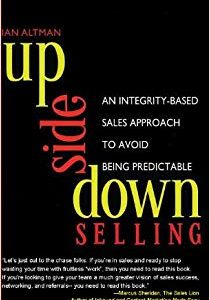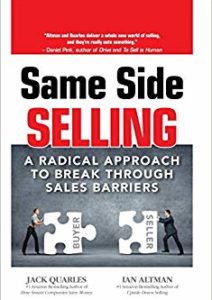I frequently hear sales managers and sales professionals say they have a great message for their customers, but it just seems to fall on deaf ears. These same people will say to me, “We tell our customer exactly what we can do for them, but they just don’t get it.” You see that’s the problem. You created a message that makes perfect sense to “you,” when in fact here’s what you really need to figure out: “Are you creating and delivering a message that makes sense to your intended audience?”
In preparing for a trip to speak in the United Kingdom, I spent many hours making changes to my content, delivery, and tone. A colleague commented to me, “At least they speak the same language in England. So, you don’t have to worry about being understood.” Nothing could be further from the truth. In advance of my trip, I consulted with two individuals I hold in high regard: Seth Godin and Dan Pink. I asked them about differences between audiences in the US and UK. Essentially, they cautioned against being insensitive to the local market. Their guidance is a major reason the trip was a great success.
What Did I Change?
Every example that I typically use in my workshops and presentations needed to be completely valid for another audience. If I had kept American terminology and solely American examples in my presentation, I would have required my audience to translate what I was saying into their terms. I wanted to avoid such a scenario that could result in a loss in translation experience for my audience.
Prior to my trip, I visited a UK website to purchase tickets to a soccer match (or as they call it, Futbol). I had to translate in my mind from British pounds to US dollars. I did not want my audience to have to do the same sort of calculation/translation during my presentation. This meant that I had to convert all dollar references to pounds, and changed some of my terminology to be certain I did not make it harder on my audience to follow the points I wanted them to grasp. Rest assured, the audience members were very intelligent. By adapting my terminology and delivery, I allowed them to focus on the concepts and avoid the extra work of translating what I said to their situation. My silly accent would be distracting enough.
How Does This Apply to You?
You may not speak at conferences and retreats, but you are always communicating with others. I find that many industries communicate in their own “language” of sorts. You use your own abbreviations and your own lingo. You might take for granted that everyone understands what you do and why they should care. The unfortunate reality is that they don’t. During my trip, the UK audience was my “customer.” I realized that in order to be effective, I had to speak in their language. Numerous delegates approached me after each event to thank me for the obvious effort I expended to adapt my talk to them. You can tell when someone has taken the time to carefully communicate in the terms that matter to you.
It takes extra effort to communicate in your client’s language instead of your own. Doing so, however, will help to ensure that you message is heard, that your audience will recognize your effort, and that you will increase the chance of making a positive impact for the other person. When that happens, your client will have a much greater comfort level working with you.
Quick Hit List
Here are some things you can do to avoid miscommunication in sales and business development situations:
- Avoid acronyms: Pick your favorite acronym and do a search. You’ll see how many ways your message could be confused. For that reason, don’t use them.
- Connect the dots: Don’t rely on your customer to see the connection between their situation and what you offer. Explain how what you have applies to them. For example, “You mentioned that regulatory compliance was important. Here is how we address that in your situation.”
- Confirm: Don’t patronize, though. There is a difference. However, asking a question like “Did I fully answer your question?” tells your customer that you care if they feel you gave an incomplete answer.
- Follow-up in writing: Send a note that summarizes your discussion with your customer to ensure you did not get anything wrong. This demonstrates that you were listening, and gives an opportunity to clarify anything before either of you gets too far down a path of misunderstanding.
It’s Your Turn
What is your favorite story about poor or great communication? What stood out that made it memorable?
Related Posts:
- The Best Way to Compete Like Giant Corporations and Win
- Get Over Your Fear of Sales
- 13 Startling Sales Stats
Get your free trial of Pipeliner CRM now.






